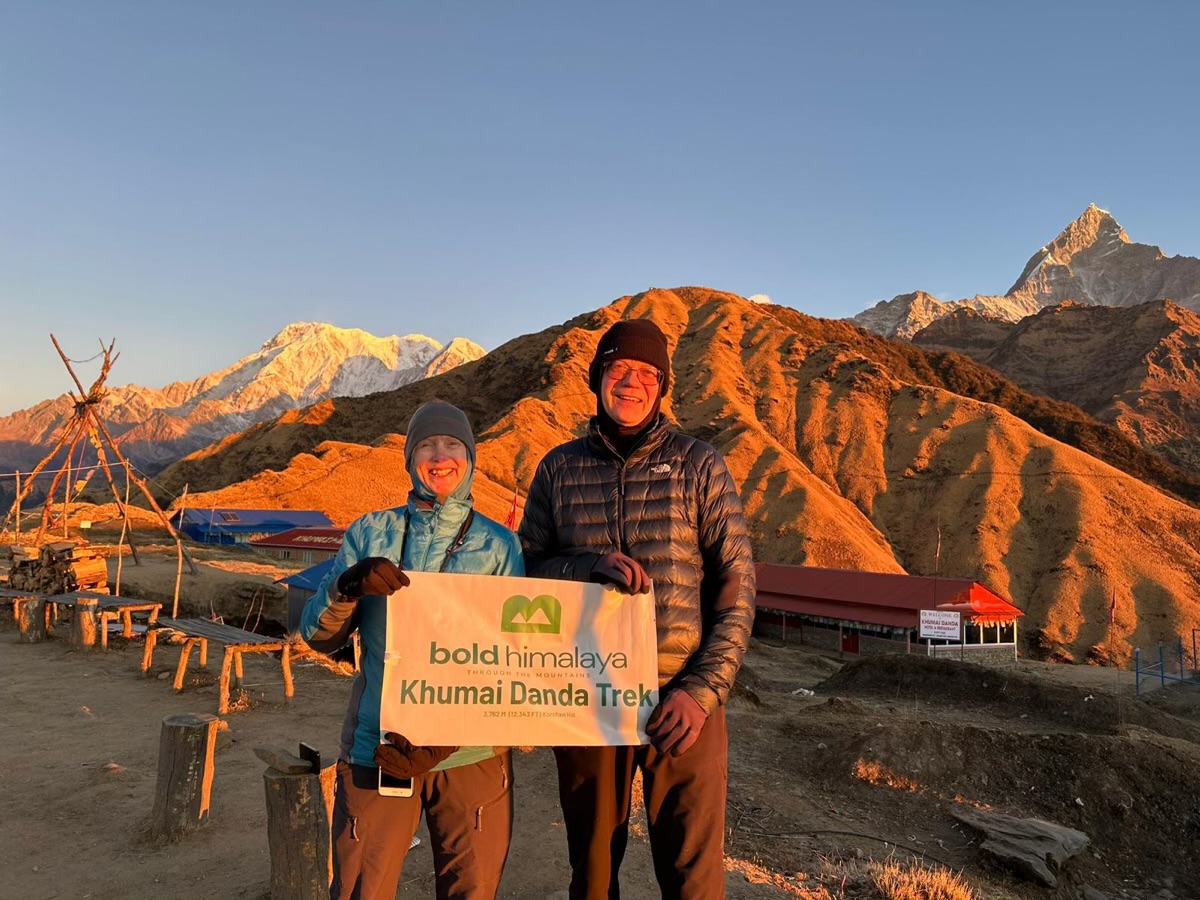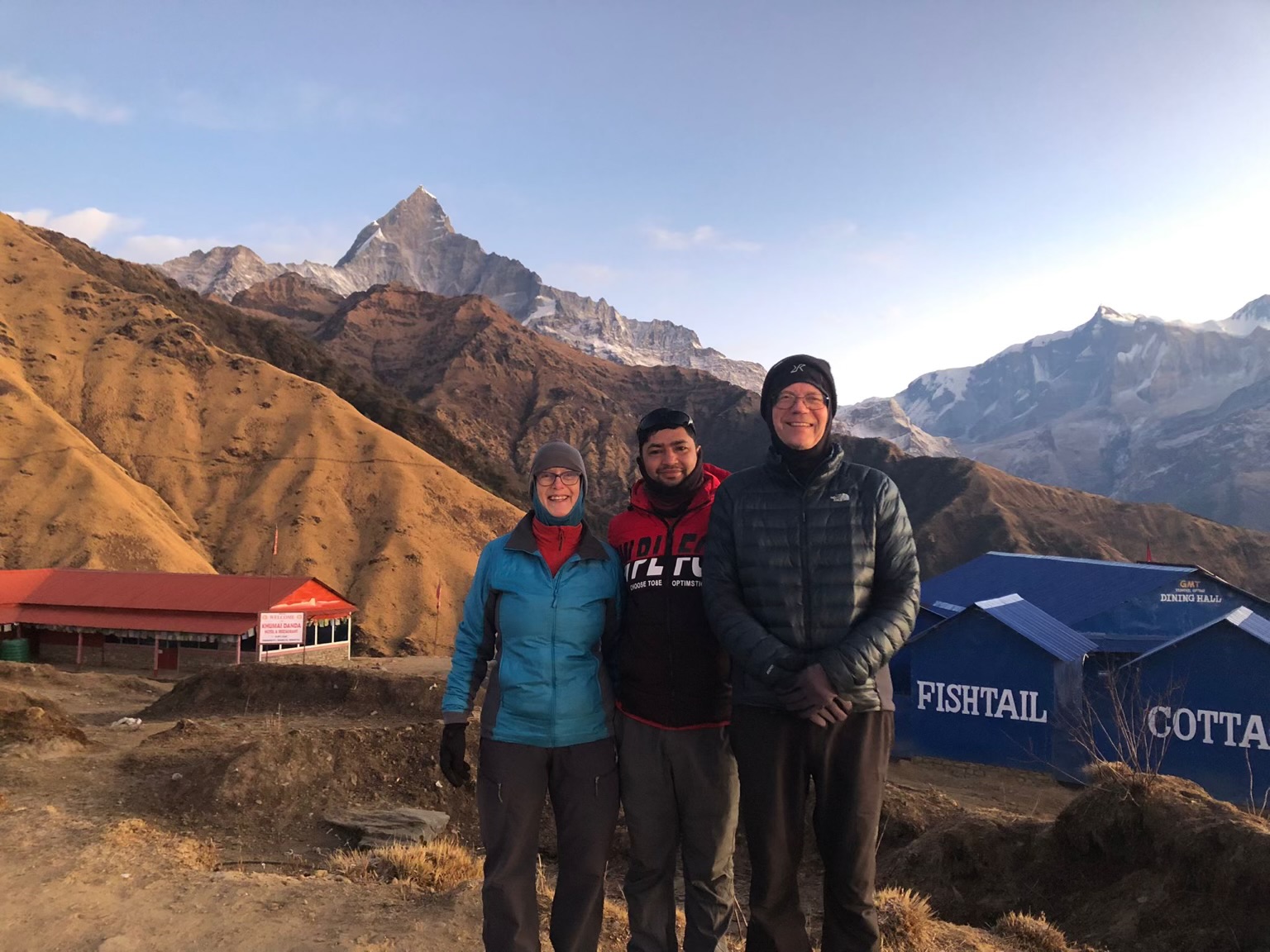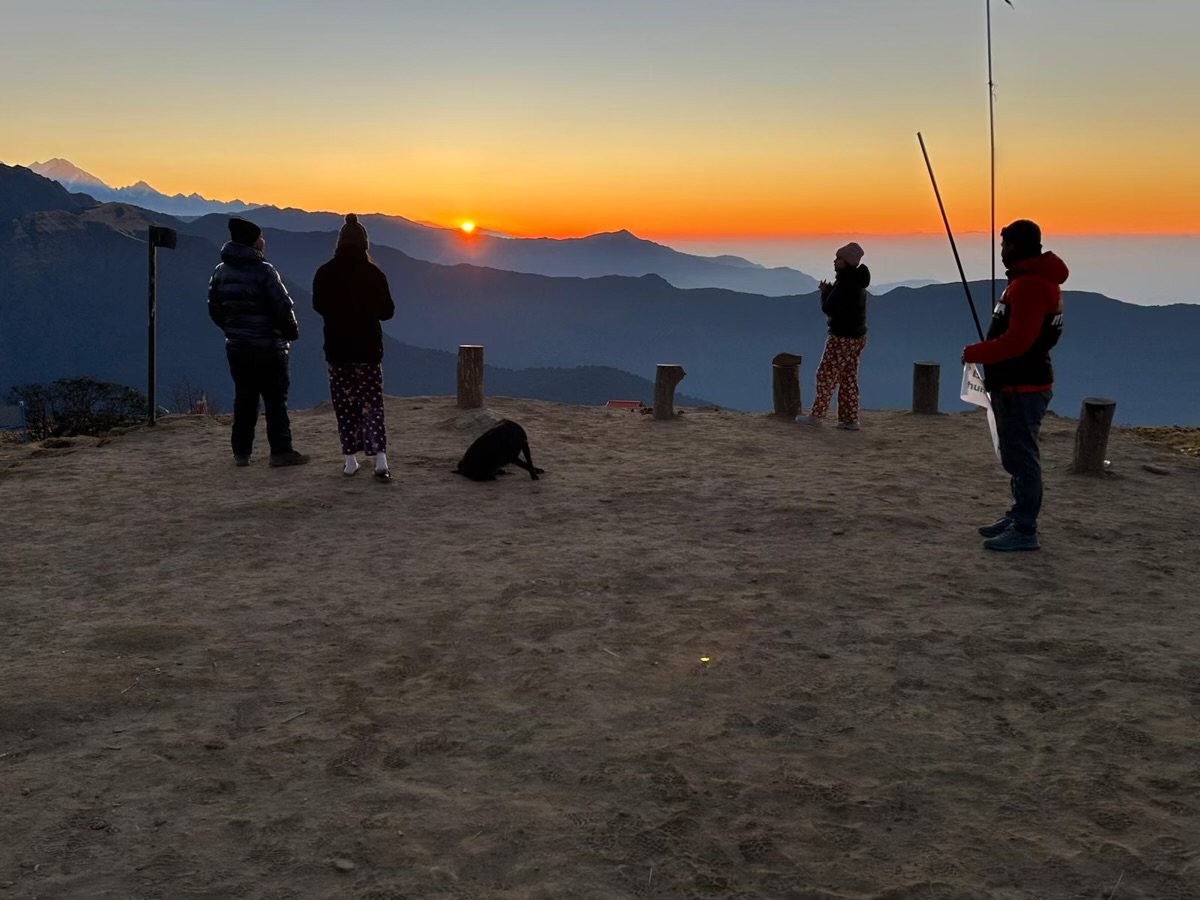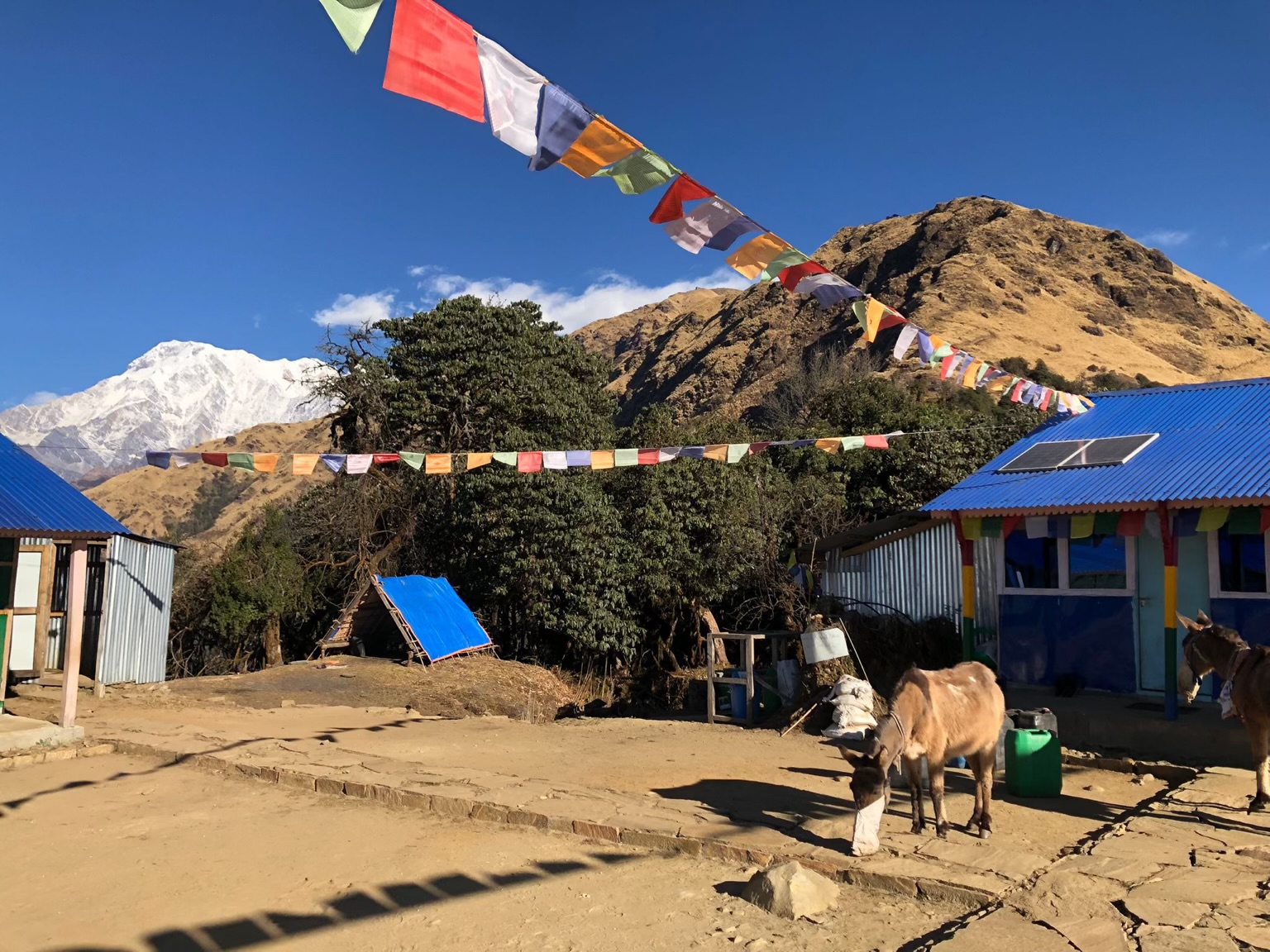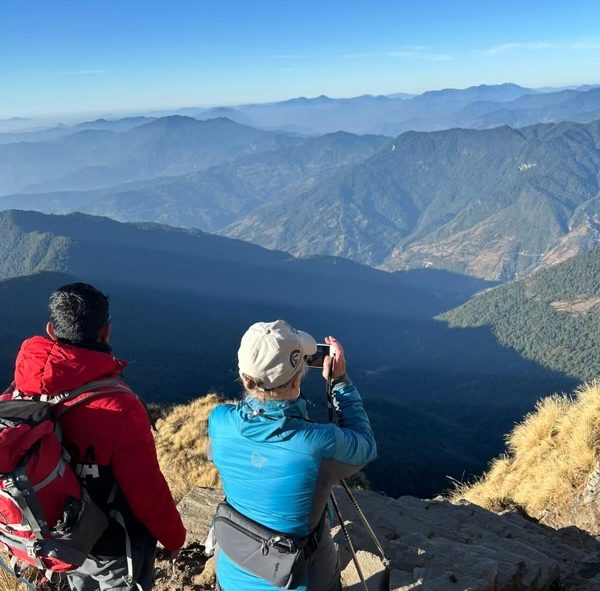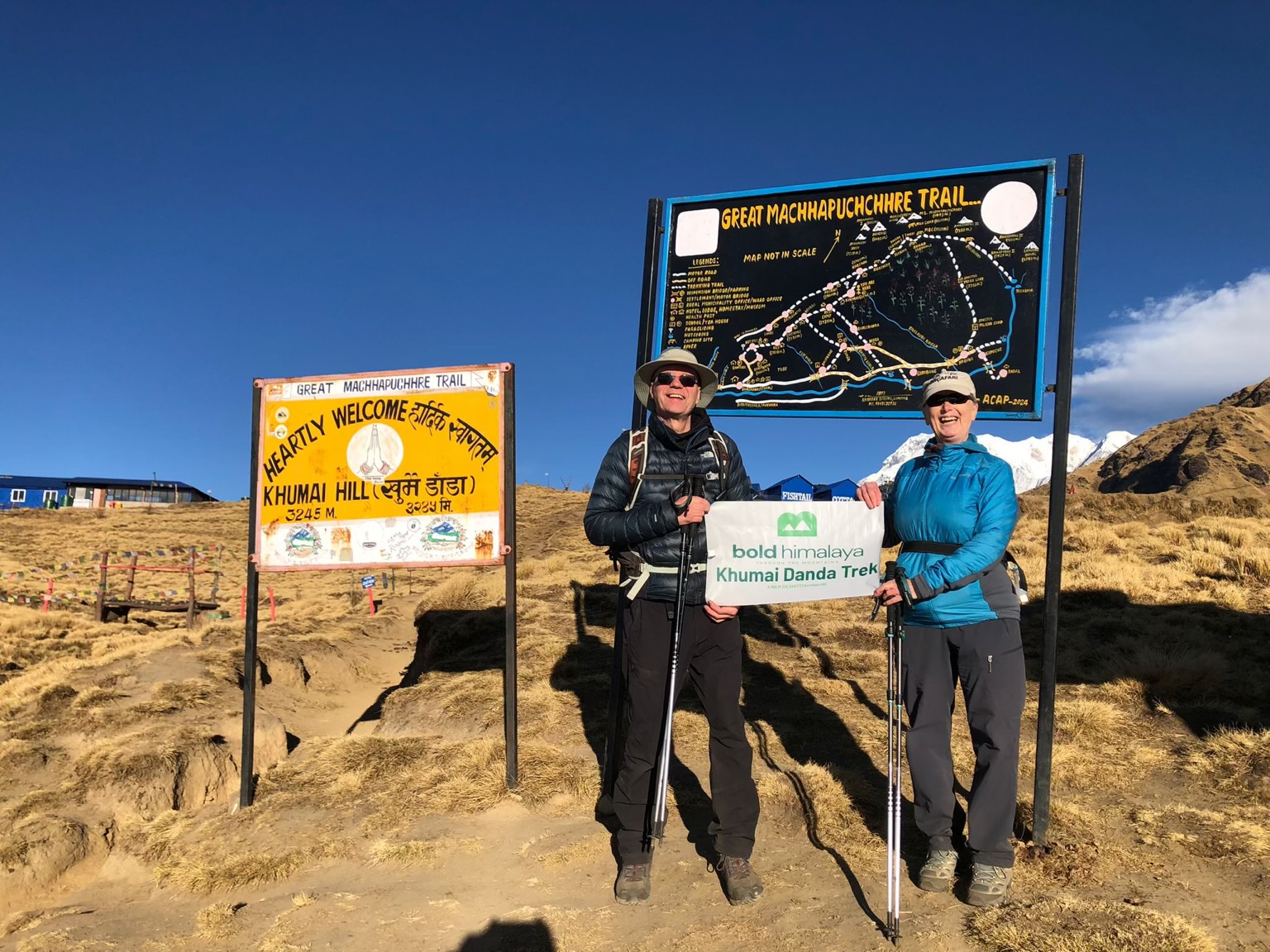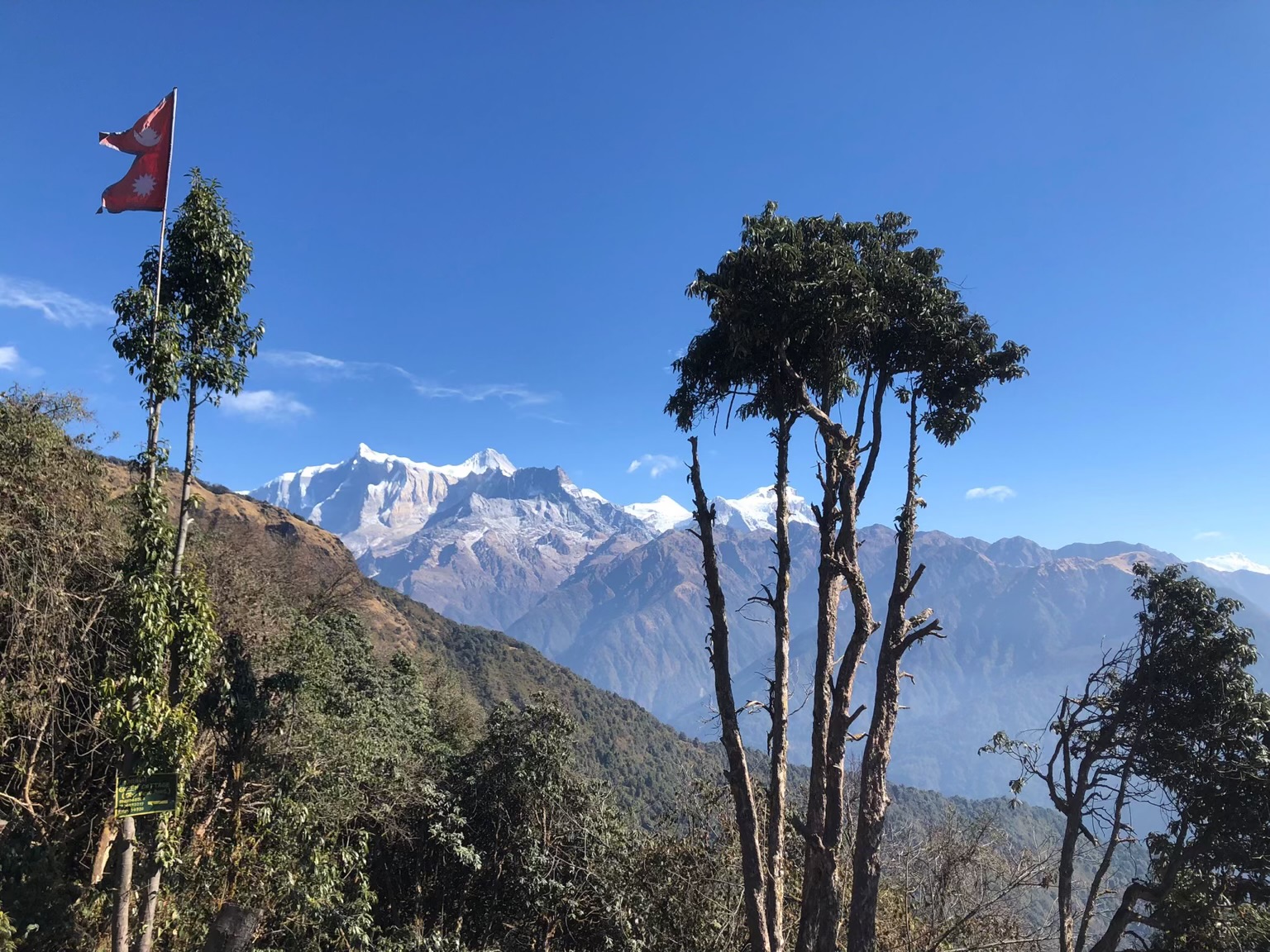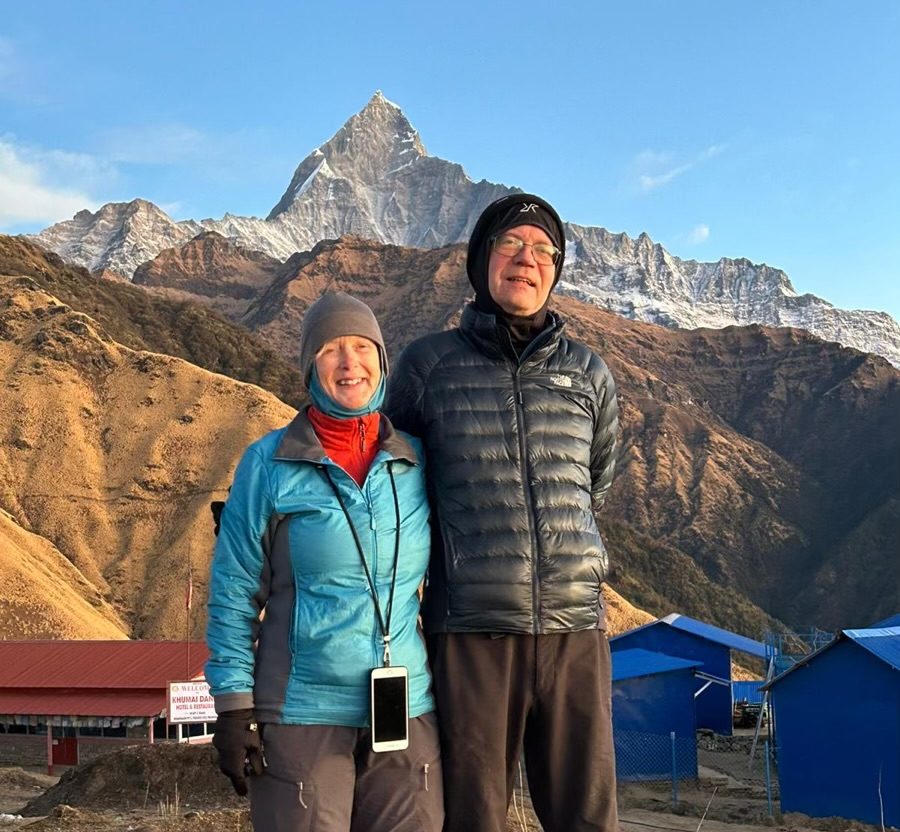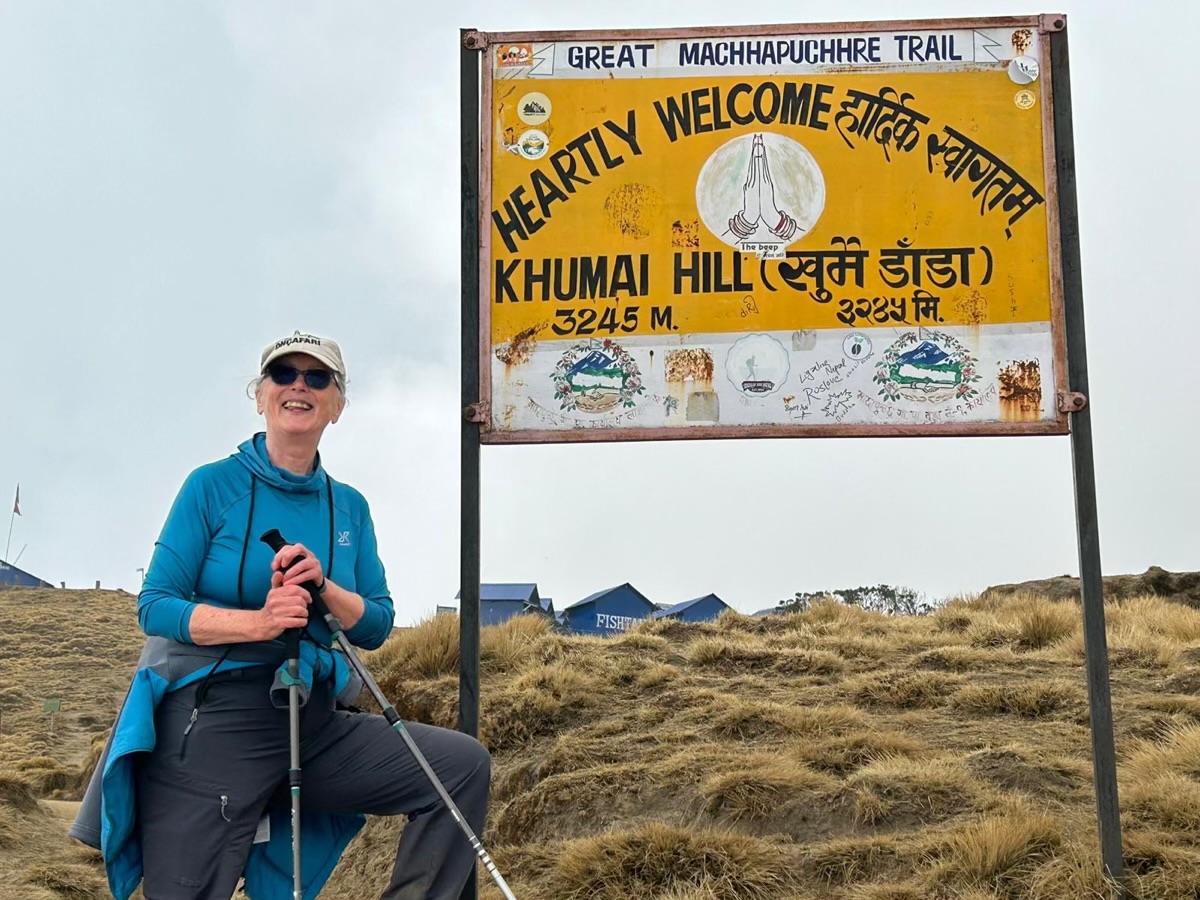Khumai Danda Trek
Detailed Itinerary
Your Journey, Step by Step
Inclusions
What’s Covered in Your Adventure
- All ground transportation (including airport pick up/drop) by private tourist vehicles
- Three-star category hotel in Kathmandu in twin sharing bed with breakfast basis
- Some necessary trekking equipment sleeping bag and down jacket (If you need one, return after the trek)
- Full meals during trekking as mentioned in the itinerary (Breakfast, Lunch, Dinner )
- First-aid medicine items
- Annapurna Conservation Area Trekking permit & TIMS card (Trekking Information Management System)
- Professional Guide including their salary, accommodation, meals, and their insurance.
- One special cultural show and farewell dinner program
- Duffle Bag, T-shirt, and Trip certificate
- Our Service Charge, Government/Local taxes
- International Flight Tickets
- Travel Insurance
- Tips for Guide and Porter
- Desserts and Bar Bills
Detailed Map of Khumai Danda Trek
Altitude Chart of Khumai Danda Trek
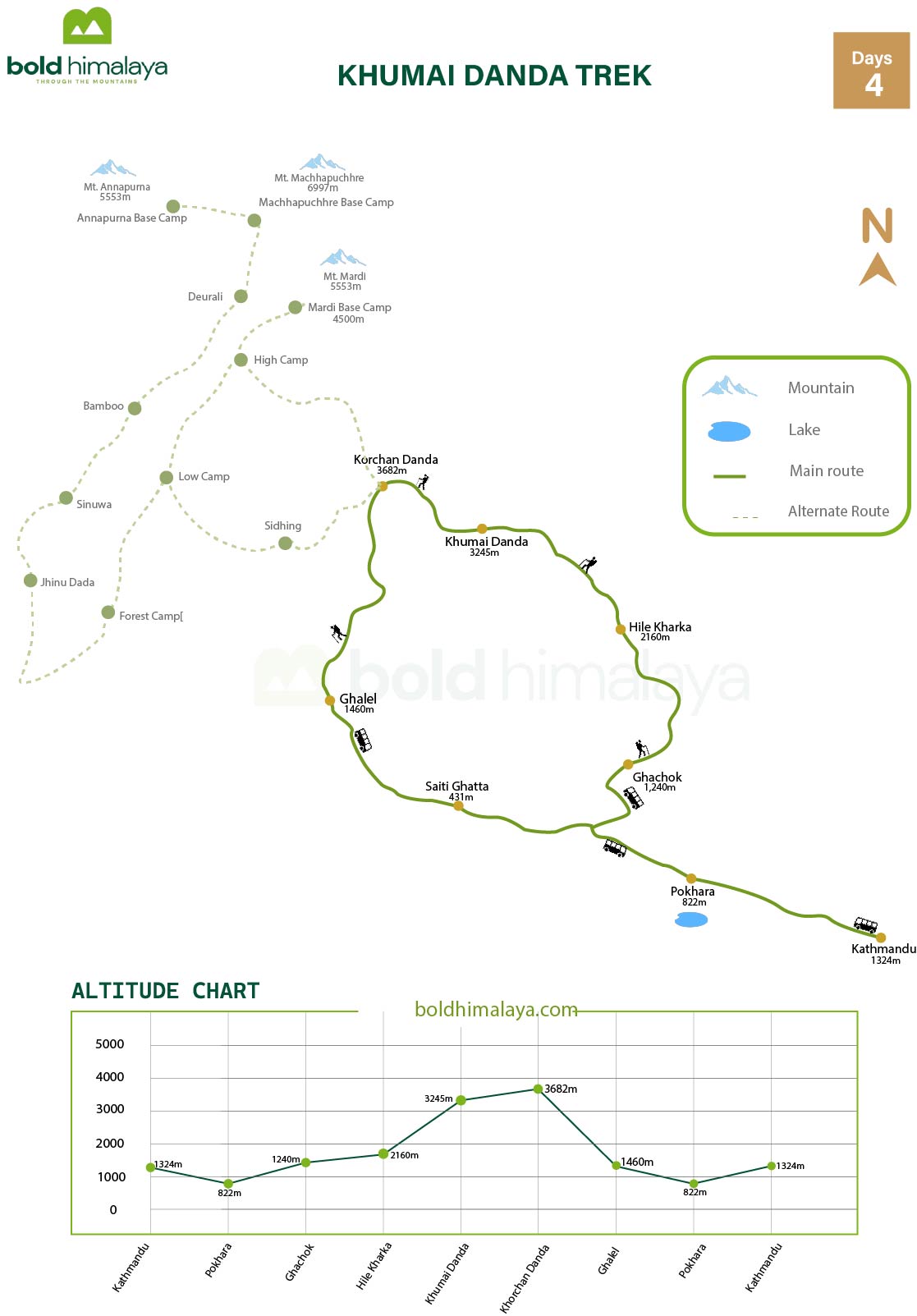
Good to Know
Things to Remember
2. Khumai Danda Trek temperature
The weather varies depending on when you go and how high you ascend. Spring and autumn have beautiful days at 10-25°C (50-77°F) and chilly nights to 0-10°C (32-50°F) – perfect trekking weather with open mountain scenery!
Winter is chilly with below -5°C (23°F) night temperatures, especially at Korchan Danda (3,682m), when you have the delight of beautiful snow. Summer is warm with highs of 30°C (86°F) in lower altitudes, but watch out for rain and muddy trails. Regardless of the season you go, prepare accordingly with plenty of layers for a comfortable hike!
3. Level of Difficulty
Khumai Danda Trek is of moderate grade – suitable for fit first-timer trekkers or seasoned trekkers looking for a short trekking experience to round off their Himalayan trek. You will be tackling sustained upslope slopes, forest path, and some very steep ups, especially from Hile Kharka to Khumai Danda.
Be prepared to trek 5-6 hours a day. Korchan Danda summit (3,682m) is your reward after the morning trek with a Himalayan sunrise! Altitude sickness is minimal at this altitude, but don’t hurry, have plenty of water, and you will be alright. You will love this trek so much more with even a small degree of fitness!
4. Permits Required
Two permits for Annapurna region:
TIMS Card (Trekkers’ Information Management System)
- Protects you by keeping all trekkers in the region under surveillance
- Buy from Nepal Tourism Board or us directly
Annapurna Conservation Area Permit (ACAP)
- Must trek this conserved mountain region
- Your contribution contributes to supporting local conservation and community effort
5. Accommodation on the Trek
One of the plus points of this trek is overnight stays in Nepali homestays and teahouses! Unlike Everest or Annapurna Base Camp treks’ tourist lodges, Khumai Danda has typical family-run lodges where you will experience the genuine Nepali hospitality.
Rooms are basic but comfortable with wooden beds and warm blankets. Bathrooms usually shared, though a few teahouses provide hot showers (marginally extra cost). Electricity will be available in most teahouses, though charging your equipment may incur a small extra charge. Since in this off-the-beaten-track region options are limited, we highly advise booking ahead in peak season!
6. Meals on the Trek
You’ll be nourished with simple, filling fare that keeps your trek going! Dal Bhat (vegetables, lentils, and rice) is what you’ll have here – Nepali trekkers shout, “Dal Bhat power, 24 hours!” because it gives such good energy. Noodles, soups, dumplings (momos), pancakes, and omelets are served.
Breakfast is typically porridge, eggs, toast, or Tibetan bread to begin the day. Since we are trekking in the countryside, fresh food might be limited compared to the city. Trekkers can bring a few energy bars, nuts, and chocolate for extra energy boost on the trail. Drink only boiled or purified water to stay healthy!
7. Packing List
Smart packing just makes the ride so much nicer! Pack light back-country gear, a good jacket for cold nights, and a water-proof outer layer because mountain weather can be iffy. Good hiking boots with some traction are a must – your ankles will thank you on those boulder sections!
Some other must-haves are:
- Comfortable back pack (30-50L) with rain cover
- Hiking poles to take it easy on the downs
- Refillable water bottle and water purification tablets
- Sleeping bag (if you are trekking in cold regions)
- Basic first aid kit and any medication which you yourself take
- Sun protection: sun hat, sunglasses, and sun screen
8. Vegetation and Wildlife on the Trek
Khumai trek is paradise for nature lovers! You will be trekking through beautiful pine, oak, and rhododendron forests. Pink and red rhododendron blooms in spring season bloom on hillside – eyes’ treat!
Be on the lookout for wildlife like the gorgeous Himalayan Monal (Nepal’s national bird), pestering langur monkeys, and agile Himalayan tahrs that sit on rocky ridges. Lucky trekkers might even spot elusive musk deer or even red pandas deep in the woods. Do bring binoculars and a great camera – this off-beat trek is wildlife-spotting paradise and nature photographer’s haven!
9. Safety Tips & Altitude Considerations
Though it is not the top, necessary precautions will make you secure and get you into the right attitude. Drink much water, pace yourself on sloping uphill portions, and follow your body’s cues. Mountains are notorious about the weather being uncertain, so you must carry rain gear as well as some warm clothing even during sunny weather.
We highly recommend you employ a local guide or porter, at least for your initial mountain trekking. Guides do more than just indicate the direction – they provide cultural details, locate animals you would have never noticed, and know what to do when it rains. Porters make the trekking fun by carrying the heavy bags while providing local jobs. Always inform your guide if you’re feeling queasy, dizzy, or extremely exhausted so problems will not occur!
FAQs
Your Questions, Answered
2. How high will I ascend?
You’ll be at incomparable heights! Khumai Danda is at 3,245 meters (10,646 feet), and the breathtaking Korchan Danda view point takes you yet another step higher at 3,682 meters (12,080 feet).
3. How challenging is the trek?
It’s what we prefer to call a “moderate” adventure – you’ll be trekking 5-6 hours a day with gentle climbs. You’ll be trekking on ridges and forest with a few steepish bits, but don’t worry – no mountaineering technical know-how needed!
4. Do I absolutely need a guide?
Yes, absolutely! The path is not full and badly signed in general. A local guide will keep you on track, show you interesting facts about the area, and honestly, sincerely, they’ll make your entire experience richer.
5. How many days do I need?
Plan for 5-7 days in total, considering the travel time from Kathmandu to Pokhara. The actual trekking from Pokhara to Khumai Danda and back consumes about 3 days.
6. When should we do Khumai Danda Trek?
Spring (Mar-May) and autumn (Sep-Nov) are nice with fine weather and scenery of mountains. Actually, the trek is possible the entire year around – a special advantage of Himalayan treks!
7. How much will the trek cost?
Costing between $250-$500 per person, it differs by mode of travel, that is, guided, porter-led, or permission, and accommodation.
8. And what about food and accommodation?
Local Nepali cuisine like Dal Bhat, noodles, and chunky soup is what you will be receiving in local teahouses. Simple but beautiful accommodation – get wooden beds, shared toilet, and even hot showers at times! Just keep in mind, electricity and internet connection can be slow!
9. How far will I be trekking?
You will walk a total of approximately 25-30 km over three fantastic days, walking in tropical rainforests, ridge lines with pleasant views, and countryside rural villages.
10. Is there significant driving from Pokhara to the trailhead?
You only drive 1.5-2 hours (20 km) to Hile, just outside Pokhara, to begin your trek. It’s a 3-day return trek to reach Khumai Danda and return to Pokhara.
11. What will I require permits for?
Only two: the TIMS Card (Trekkers’ Information Management System) and the Annapurna Conservation Area Permit (ACAP). You can easily get both of them in Pokhara or Kathmandu before you leave.
12. Can I extend an extra day to my trek?
Yes! Trekkers tend to connect Khumai Danda to Mardi Himal Base Camp Trek, Annapurna Base Camp, or Australian Camp for an even more stunning experience. The region has hundreds of trails to explore!
View OurSimilar Packages
Discover our top tours, loved by thousands of travelers annually. Choose the adventure that inspires you and embark on a journey tailored to your desires.

Save 18%
Annapurna Base Camp Helicopter Tour from Pokhara
Annapurna Base Camp Helicopter is the perfect helicopter day tour in...
Save 29%
Annapurna Circuit Trek
One of the most famous trekking routes in the world is...





